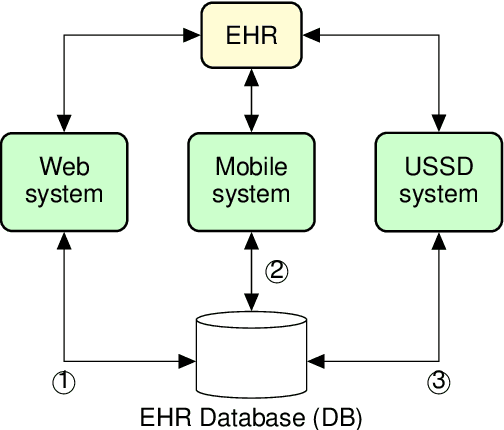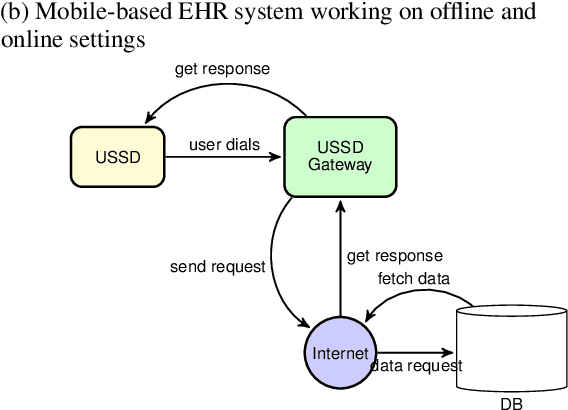Kalonji Kalala
University of Ottawa
Logical foundations of Smart Contracts
Feb 13, 2025Abstract:Nowadays, sophisticated domains are emerging which require appropriate formalisms to be specified accurately in order to reason about them. One such domain is constituted of smart contracts that have emerged in cyber physical systems as a way of enforcing formal agreements between components of these systems. Smart contracts self-execute to run and share business processes through blockchain, in decentralized systems, with many different participants. Legal contracts are in many cases complex documents, with a number of exceptions, and many subcontracts. The implementation of smart contracts based on legal contracts is a long and laborious task, that needs to include all actions, procedures, and the effects of actions related to the execution of the contract. An ongoing open problem in this area is to formally account for smart contracts using a uniform and somewhat universal formalism. This thesis proposes logical foundations to smart contracts using the Situation Calculus, a logic for reasoning about actions. Situation Calculus is one of the prominent logic-based artificial intelligence approaches that provides enough logical mechanism to specify and implement dynamic and complex systems such as contracts. Situation Calculus is suitable to show how worlds dynamically change. Smart contracts are going to be implement with Golog (written en Prolog), a Situation Calculus-based programming language for modeling complex and dynamic behaviors.
* In Proceedings ICLP 2024, arXiv:2502.08453
Artificial Intelligence for Public Health Surveillance in Africa: Applications and Opportunities
Aug 05, 2024Abstract:Artificial Intelligence (AI) is revolutionizing various fields, including public health surveillance. In Africa, where health systems frequently encounter challenges such as limited resources, inadequate infrastructure, failed health information systems and a shortage of skilled health professionals, AI offers a transformative opportunity. This paper investigates the applications of AI in public health surveillance across the continent, presenting successful case studies and examining the benefits, opportunities, and challenges of implementing AI technologies in African healthcare settings. Our paper highlights AI's potential to enhance disease monitoring and health outcomes, and support effective public health interventions. The findings presented in the paper demonstrate that AI can significantly improve the accuracy and timeliness of disease detection and prediction, optimize resource allocation, and facilitate targeted public health strategies. Additionally, our paper identified key barriers to the widespread adoption of AI in African public health systems and proposed actionable recommendations to overcome these challenges.
A Short Survey of Human Mobility Prediction in Epidemic Modeling from Transformers to LLMs
Apr 25, 2024


Abstract:This paper provides a comprehensive survey of recent advancements in leveraging machine learning techniques, particularly Transformer models, for predicting human mobility patterns during epidemics. Understanding how people move during epidemics is essential for modeling the spread of diseases and devising effective response strategies. Forecasting population movement is crucial for informing epidemiological models and facilitating effective response planning in public health emergencies. Predicting mobility patterns can enable authorities to better anticipate the geographical and temporal spread of diseases, allocate resources more efficiently, and implement targeted interventions. We review a range of approaches utilizing both pretrained language models like BERT and Large Language Models (LLMs) tailored specifically for mobility prediction tasks. These models have demonstrated significant potential in capturing complex spatio-temporal dependencies and contextual patterns in textual data.
Redesigning Electronic Health Record Systems to Support Developing Countries
Jan 31, 2023

Abstract:Electronic Health Record (EHR) has become an essential tool in the healthcare ecosystem, providing authorized clinicians with patients' health-related information for better treatment. While most developed countries are taking advantage of EHRs to improve their healthcare system, it remains challenging in developing countries to support clinical decision-making and public health using a computerized patient healthcare information system. This paper proposes a novel EHR architecture suitable for developing countries--an architecture that fosters inclusion and provides solutions tailored to all social classes and socioeconomic statuses. Our architecture foresees an internet-free (offline) solution to allow medical transactions between healthcare organizations, and the storage of EHRs in geographically underserved and rural areas. Moreover, we discuss how artificial intelligence can leverage anonymous health-related information to enable better public health policy and surveillance.
 Add to Chrome
Add to Chrome Add to Firefox
Add to Firefox Add to Edge
Add to Edge